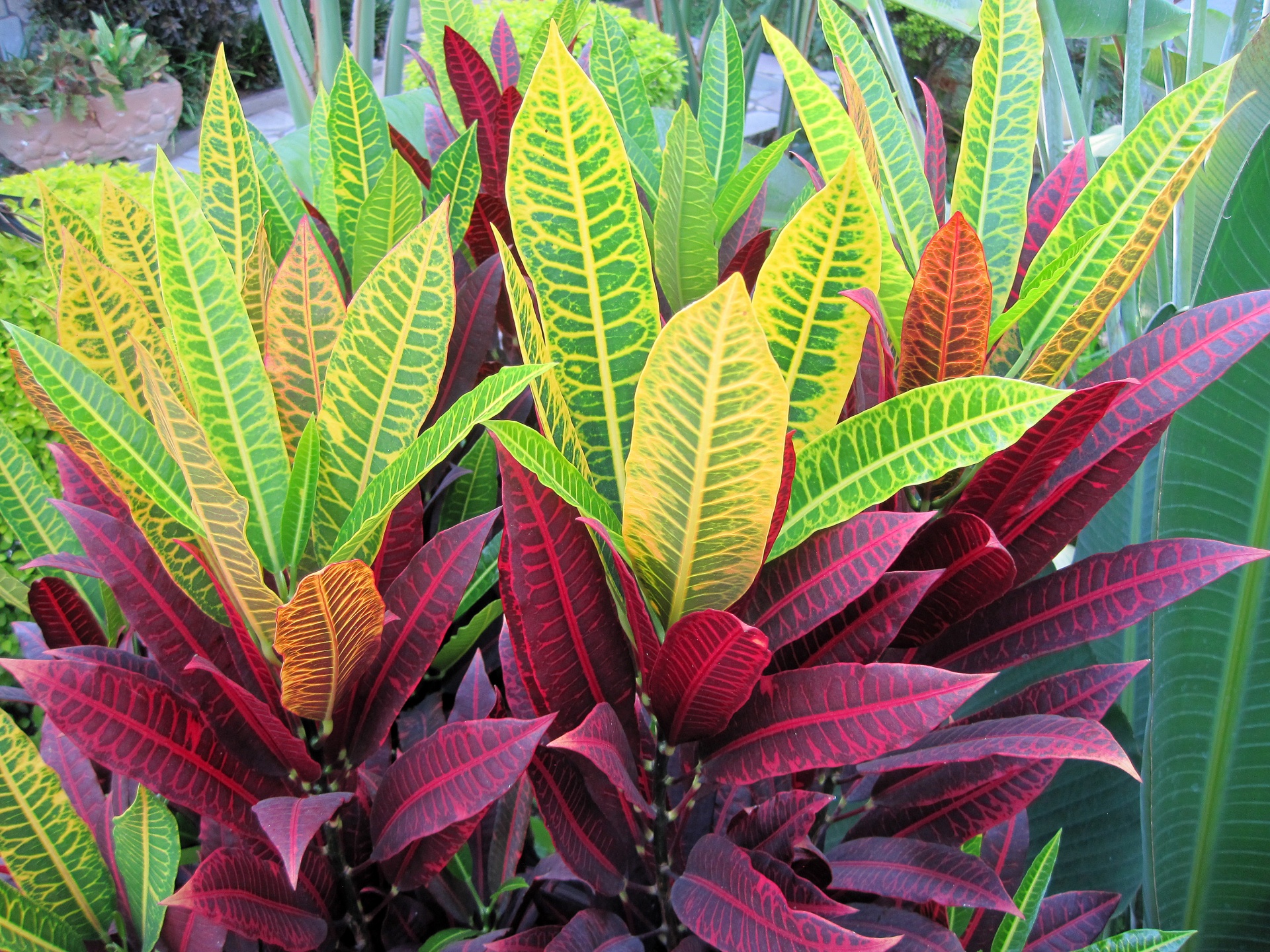The croton (Codiaeum variegatum) is a popular houseplant that has leaves that are different shades of green and yellow. But cats that are curious and nibble on the leaves or stems of this pretty plant could get very sick. Toxins called diterpenoid phorbol esters are found in all parts of the croton plant and can make cats’ mouths, stomachs, and intestines hurt if they eat them.
According to the ASPCA, common signs of croton poisoning in cats include excessive drooling, vomiting, diarrhea, loss of appetite, and skin irritation if exposed to the plant’s sap. The toxins affect cats more severely than dogs, so even a small amount can cause concerning symptoms Kittens, small cats, and cats with underlying health issues are most at risk for life-threatening reactions
Do something right away if you see your cat playing with or chewing on any part of a croton plant. Clean its mouth to get rid of any plant matter or sap. If the sap makes your skin itch, wash it off with soap and water. Figure out what parts were eaten and keep a close eye out for any troubling symptoms for the next 12 hours. Get help by calling your vet or the ASPCA Poison Control Center.
Bring your cat and a sample of the plant in for examination if symptoms like repeated vomiting, diarrhea, or lethargy develop. With prompt veterinary treatment to control nausea, rehydrate, and support kidney function, most cats recover fully in 24-48 hours. However, prevention is key, so keep all croton plants completely out of your cat’s reach.
Death is rare, but it can happen if dehydration from diarrhea and vomiting sets in before treatment starts. If your cat eats a croton plant, don’t wait—take it to the vet right away. Being careful will help keep your cat safe while you enjoy the beauty of a croton as a houseplant. Just place it somewhere totally inaccessible to avoid catastrophe.
Key Takeaways
-
All parts of croton plants, including the leaves, stems, sap, and seeds, are toxic to cats.
-
Common symptoms include vomiting, diarrhea, drooling, and loss of appetite.
-
Seek prompt vet care if your cat eats any part of a croton plant to prevent dangerous dehydration.
-
With treatment, most cats recover fully within 24-48 hours.
-
Thoroughly cat-proof your home by keeping croton plants completely out of reach. Prevention is critical.

First Aid for Poisoning
The most important thing is to remove the toxic particles of the plant from the skin, mucous membranes, or the animals body as soon as possible. Do not let the poisonous plant sap get on your dog’s skin or eyes. Instead, wash them out with lots of water. If there is a suspicion that the animal has swallowed a piece of the plant, it is necessary to give a large amount of water, try to induce vomiting, and give sorbents.
The next step is to visit the vet. In such a situation, you cannot hesitate! You are risking your pets life, and every minute matters. Bring a photo of the eaten plant with you so the vet can determine the type of toxin and prescribe adequate therapy. Usually, animals dont eat a lot of poisonous leaves, so the intoxication is rarely severe. Nonetheless, everything depends on your pet and its health condition.
Is Foliage Toxic to Cats?
Foliage plants are a wide variety of species. Unfortunately, most foliage or ornamental plants are either toxic or unedible for cats and other pets. So, everything depends on a particular species of foliage plant.
Are Croton Plants Toxic to Cats? What You Need to Know #crotonplant #houseplants #petsafety #petcare
FAQ
What happens if a cat eats croton?
Toxicity to pets Croton is a common name often used for Codiaeum variegatum, an ornamental plant. Ingestion may cause mild oral and gastrointestinal irritation resulting in mild drooling, vomiting, and/or diarrhea. Skin irritation may also occur after exposure to the sap but tends to be mild.
Are croton houseplants safe for cats?
Other common plants that are toxic to cats include: Croton (Joseph’s Coat) Caladium (Elephant Ear)
How poisonous is the croton plant?
As with many members of the family, croton sap can be irritating to the skin, and the plant is considered poisonous.
What is the most toxic plant to a cat?
Lily of the valley is one of the most poisonous plants to cats and dogs. The plant’s bulb, roots, stems, leaves, blooms and berries are all poisonous.
